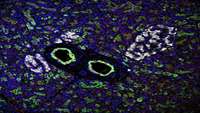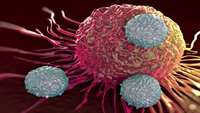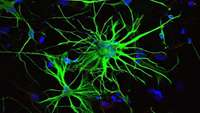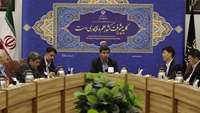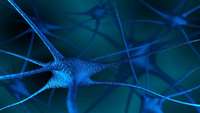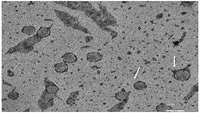Researchers Identify Stem Cells That Can Be Programmed to Produce Insulin
Researchers from the Diabetes Research Institute at the University of Miami have discovered that stem cells found in the human pancreas can differentiate into insulin-producing cells.
Molecular Matrix Gets FDA Approval for Bone Graft Substitute Technology
Molecular Matrix, a privately held company that arose from the University of California, Davis, received FDA approval for its Osteo-P bone graft substitute technology. Osteo-P is a non-mineralized, synthetic polymer bone void filler that is highly porous, biocompatible and biodegradable.
Sorrento Therapeutics Autologous Anti-CEA CAR-T Cell Therapy for Liver Metastases Demonstrates Therapeutic Activity in Stage IV Pancreas Cancer in a Phase 1b HITM-SURE Trial
Sorrento Therapeutics, Inc. (NASDAQ:SRNE) (“Sorrento”), cellular therapy focused subsidiary, TNK Therapeutics, Inc. (“TNK”), and Surefire Medical, Inc.
New cell model could lead to treatments for neurological diseases
Astrocytes are star shaped cells that are found in the brain and spine and were long thought to be the “glue” that binds nerve cells. However, recent advances show that they are in fact responsible for complex regulation of a variety of critical brain functions. They have also proven to be central to neurological diseases such as Alzheimer’s. But for research, these cells prove problematic.
Cooperation Agreement on Development of the Third Phase of Pardis Technology Park Is Signed between the Vice-Presidency for Science and Technology Affairs and China
According to the Public Relations and information Center of the Vice-Presidency for Science and Technology, a cooperation agreement was signed between the Vice-Presidency and China in a meeting attended by Alireza Daliri, deputy for management development and resources, Mahdi Safarinia, head of the Pardis technology park, and Camsi Co. from China.
Fragile X syndrome neurons can be restored
Fragile X syndrome is the most frequent cause of intellectual disability in males, affecting one out of every 3,600 boys born. The syndrome can also cause autistic traits, such as social and communication deficits, as well as attention problems and hyperactivity. Currently, there is no cure for this disorder.
Lab-grown Human Cerebellar Cells Yield Clues to Autism
Increasing evidence has linked autism spectrum disorder (ASD) with dysfunction of the brains cerebellum, but the details have been unclear. In a new study, researchers at Boston Childrens Hospital used stem cell technology to create cerebellar cells known as Purkinje cells from patients with tuberous sclerosis complex (TSC), a genetic syndrome that often includes ASD-like features. In the lab, the cells showed several characteristics that may help explain how ASD develops at the molecular level.
Stem-cell based stroke treatment repairs brain tissue
A team of researchers at the University of Georgia’s Regenerative Bioscience Center and ArunA Biomedical, a UGA startup company, have developed a new treatment for stroke that reduces brain damage and accelerates the brain’s natural healing tendencies in animal models. They published their findings in the journal Translational Stroke Research.
Scientists create intestine-derived organoids as a model to study necrotizing enterocolitis
Researchers have created novel multicellular models as a way to study necrotizing enterocolitis (NEC). The models, created with fetal and adult intestinal tissues, have already provided researchers with insights into fetal immune reactions to gut-colonizing bacteria.
Support of Research Projects in Stem Cell sciences
Research projects on stem cells will be supported due to the cooperation between the Iranian national science foundation and the council for stem cells sciences and technologies.


